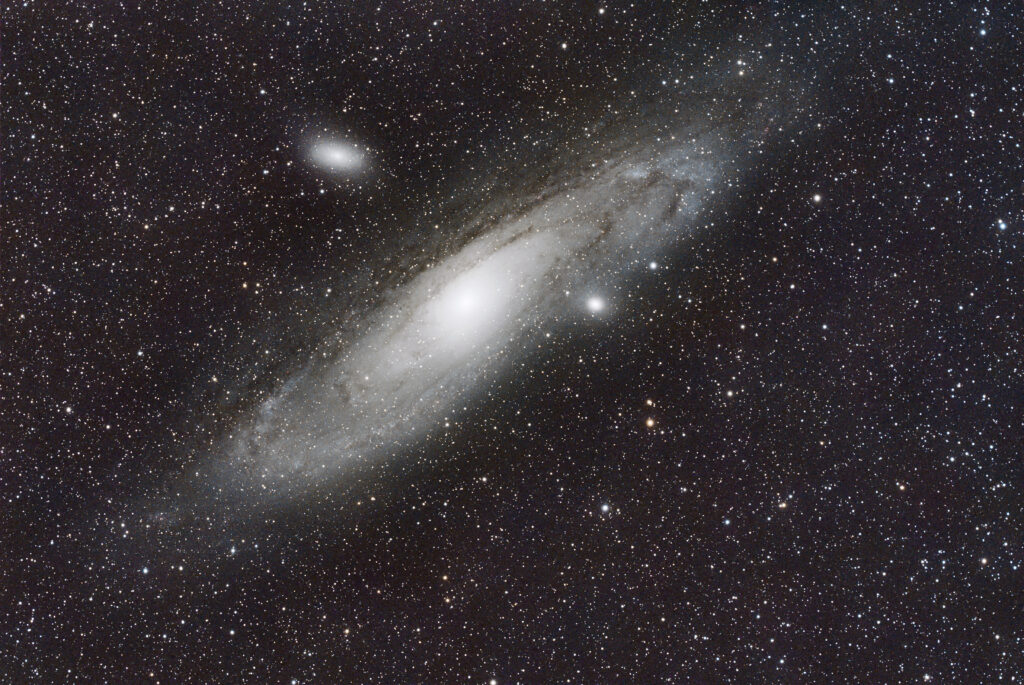
A galaxy is a system of stars, stellar remnants, interstellar gas, dust, and dark matter bound together by gravity. The word is derived from the Greek galaxias (γαλαξίας), literally ‘milky’, a reference to the Milky Way galaxy that contains the Solar System. Galaxies range in size from dwarfs with less than a thousand stars, to the largest galaxies known – supergiants with one hundred trillion stars, each orbiting its galaxy’s center of mass. Most of the mass in a typical galaxy is in the form of dark matter, with only a few percent of that mass visible in the form of stars and nebulae. Supermassive black holes are a common feature at the centres of galaxies.
Galaxies are categorised according to their visual morphology as spiral, elliptical, or irregular. The Milky Way is an example of a spiral galaxy. It is estimated that there are between 200 billion (2×1011) to 2 trillion galaxies in the observable universe. Most galaxies are 3,000 to 300,000 light years in diameter and are separated by distances in the order of millions of light years.
The space between galaxies is filled with a tenuous gas (the intergalactic medium) with an average density of less than one atom per cubic metre. Most galaxies are gravitationally organised into groups, clusters and superclusters. The Milky Way is part of the Local Group, which it dominates along with the Andromeda Galaxy. The group is part of the Virgo Supercluster. At the largest scale, these associations are generally arranged into sheets and filaments surrounded by immense voids. Both the Local Group and the Virgo Supercluster are contained in a much larger cosmic structure named Laniakea.